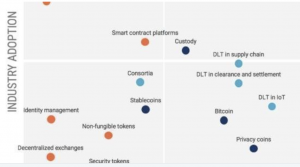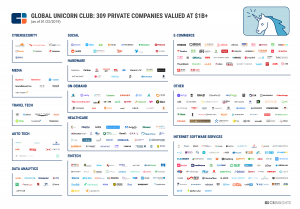BUSINESS MODEL CANVAS
The way to plan the future. Perfectly
This page contains all the useful information you need to start exploiting BUSINESS MODEL CANVAS potential and plan your way to success.
What is it?
BUSINESS MODEL CANVAS is a strategic business and lean management document, which has become an international standard to quickly visualise how a company or a startup creates, distributes and brings value to its customers.
This model was proposed by Alexander Osterwalder in 2004 in his first book “The business model ontology”. It was subsequently improved upon by the author, together with Yves Pigneur, Alan Smith and the collaboration of a community of 470 experts in 45 countries around the world.
For convenience, we have shortened the name to “business model canvas” or BUSINESS MODEL CANVAS. (Since there are only 4 BUSINESS MODEL CANVAS’s, I would remove this sentence and continue to use Business Model Canvas for SEO matters, even if we then have to check if these portions of text are really indexed or are part of non-public pages?)
Why use it?
BUSINESS MODEL CANVAS allows us to understand, summarise and share a lot of information in a simple way and in a language that everyone can understand.
It also gives us a global vision of the entire business system and its dynamics with the external market.
The power of this tool also lies in the visual and collaborative aspect that allows for different people to discuss (team work) and generate new ideas and solutions.
For startups, it is a strategic tool especially at events and bar camps.
When to use a BUSINESS MODEL CANVAS
Making a BUSINESS MODEL CANVAS is an operation that can be done at any time but it is very advisable when the following factors appear:
- new threats from the outside (new competitors, new markets, etc.)
- new needs that require different support (possible new customers, better technologies, etc…)
- slowness in business operations (reduced earnings).
How do you use it?
The structure of a BUSINESS MODEL CANVAS resembles that of a table with 10 boxes. The latter can be completed and commented on by the appropriate editor and also by your collaborators.
The following list details the individual blocks of BUSINESS MODEL CANVAS:
Key Partner
Show all the companies (but also the NGO’s and cooperatives) with whom to start up a close collaboration in order to create value to offer your customers. Include in this list also: strategic alliances, suppliers and collaborators.
Key activities
Show a list of activities to be done to create value to offer your customers in three main areas: idea conception, production and promotion.
Value Proposition
The Value Proposition represents the heart of every company or startup and is a key activity to create value to offer your customers. We advise you to carry out the activity by choosing the ideas on a list and ranking them by answering the following questions:
- what problem do I solve?
- why does anyone need this solution?
- what are the hidden causes behind this problem?
Tips from Michael Hendricks
Creating an adequate Value Proposition is a fundamental step, which is why we contacted Michael Hendricks, CEO of Uncompress, the Californian company that has created a revolutionary compression engine:
“The only way to get to your customers is to analyse the market segment and collect the value propositions of your competitors so as to understand how your company can solve a user problem that no one has answered yet.
Once you have identified the value, immediately share it with your colleagues and make a very rough prototype to try with friends and relatives to see if the idea works”
Customer Relations
Describe how you plan to acquire and retain customers.
These are our tips for building solid relations:
- carry out effective corporate communication, one that captures the feeling of your target
- make a prototype to test your customers’ experience
- improve flows and processes to and from customers. The key word for the success of an excellent customer relation is efficiency!
Customer Segments
Separate customers into groups defined by needs, interests, relation types and distribution channels.
Donald Nielsen, Head of the Google Mobile User Experience, has some tips for you:
“To fully understand the needs of the users you want to contact, the only advice is to start with an exploratory phase, in which, together with your collaborators, you perform 5-8 interviews to analyse the previous experience of people in the area that you wish to perform. Next, analyse the video or audio of the interview and compare it with the notes collected to create a sort of identikit of your typical customer, which we call a persona . The latter is a very powerful tool because it helps you give a face to your customers through real needs and frustrations”.
Key Resources
List what the company or startup needs in order to produce the value to offer the customer. Resources can be physical, human, cultural, digital and financial. Remember to rank this list in relation to the value offered.
Channels
Imagine the means by which the value offered reaches your customers in the communication, sales and distribution phases.
Jack Blackfield of Nutshell, a successful startup for the creation of Smartwatch, recommends you do the following:
- draw up a ranking of the channels by order of importance
- postulate what the life cycle of a purchase flow might be
- simulate the shopping experience with some minimum viable products
Cost Structure
Enter the list of fixed and variable costs that the company or the startup will face to create the value. Software tips: we suggest you use the Editor table tool and use the global cost view, by selecting the tables and generating a chart from the toolbar.
Revenue Streams
After the cost list, remember to include the revenue from the different types of customers, divided by category of value offered. We also recommend you to:
- examine customer payment methods
- improve the object or service they are buying
- define the prices
We have added a block to the business model canvas called Brainstorming Stage that you can use as a container to collect ideas, suggestions or personal or company team notes.
Here are some examples: marketplace model, free model, freemium model, subscription model, on-demand model, experience model, hypermarket model, ecosystem model, pyramid model, access-over ownership model.
https://www.pgf500.com/tutorial
- Useful resources
Two books we recommend to further improve your knowledge of the topics are written by Alexander Osterwalder, creator of BUSINESS MODEL CANVAS:
- Osterwalder, Y. Pigneur (2009) Business Model Generation






